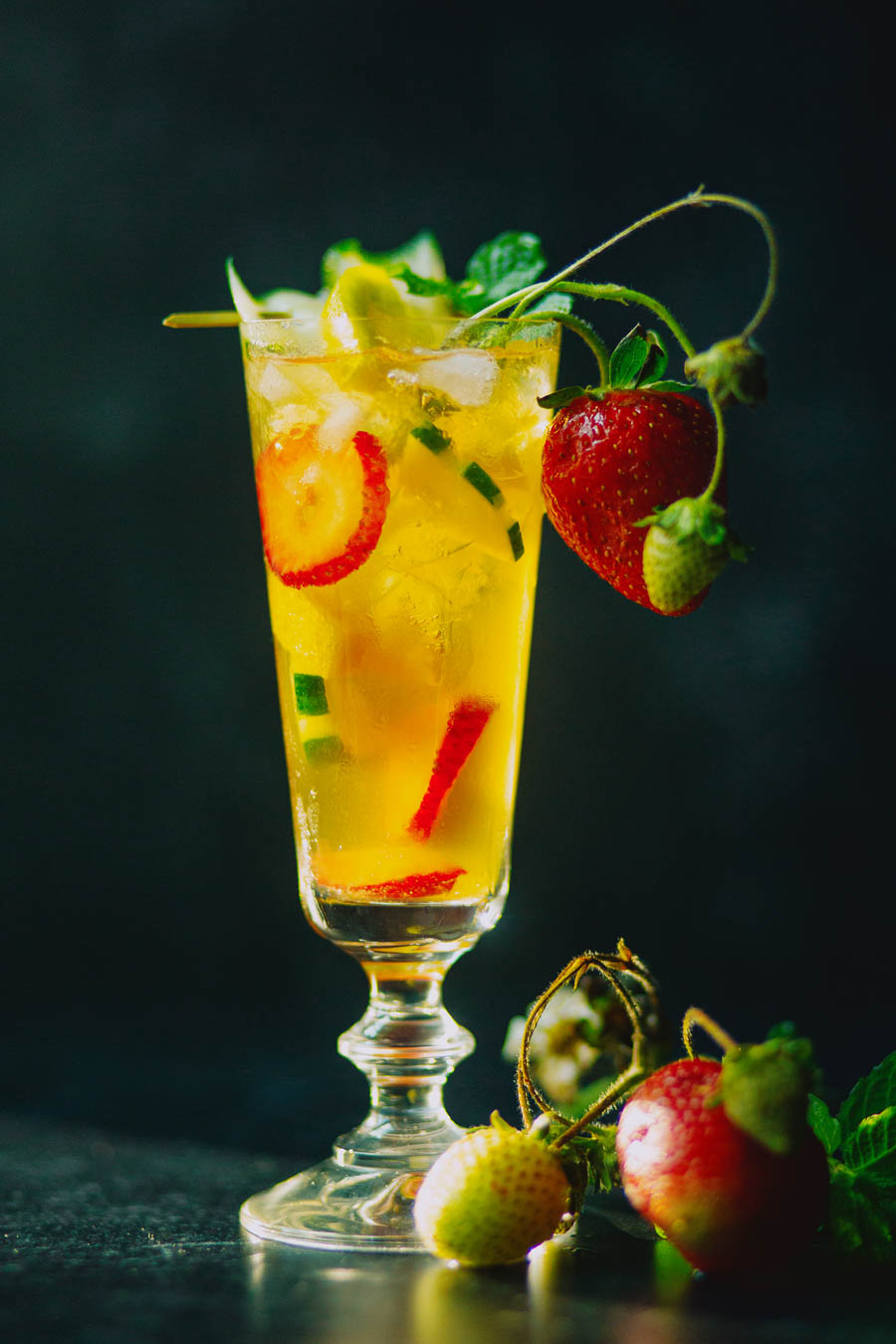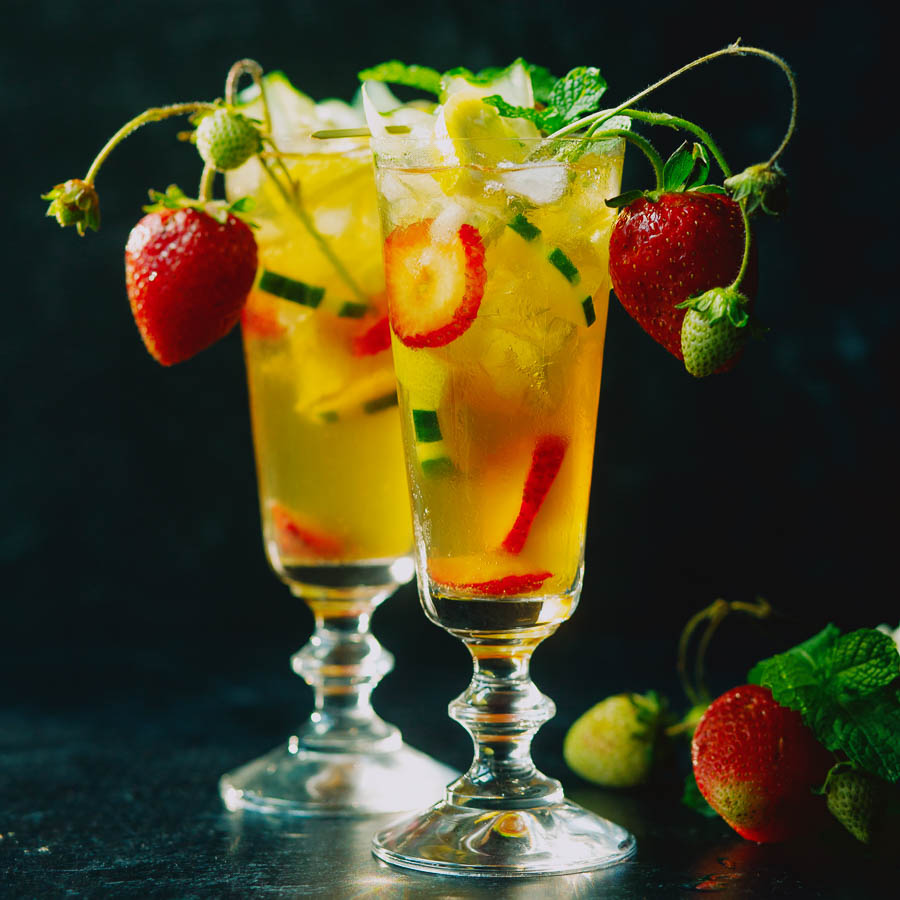The classic Pimm’s Cup No.1 has a longstanding reputation for being a fun and flirty summertime party goer. It’s a smash hit at Wimbledon and an elegantly dressed guest at garden parties and the odd polo match (not that I can personally attest to this). It charms everywhere it goes with its low alcohol content and light and fruity taste.
Pimm’s is a gin based spirit made with a mixture of herbs and spices with a fruity, slightly bitter kick, in the vein of Aperol. It was created by Englishman James Pimm in 1823, when he was searching for something to serve at his oyster bar that would distinguish it from other nearby restaurants. Designed as an aid to digestion, it was served in a particular tankard known as the No.1 Cup —hence the cocktail’s name — and became a success.
In the 1930’s Pimm’s No.2 made with Scotch was introduced, followed over the years by No.3 made with brandy, No.4 made with rum, No.5 made with Rye and No.6 made with vodka and while No.3 and No.6 have come and gone over the years, only the stalwart original has managed to fully stand the test of time.

It is traditionally served with English style lemonade which is clear and carbonated – Sprite/7Up are a close but sweeter match. A less sweet, perhaps better, match might be San Pellegrino’s limonata soda. But it is quite happy to dance with alternatives such as ginger ale or bitter lemon (my favourite – I use the Fever Tree brand) and adores accessorizing with cucumber, citrus, strawberries and mint — a combination of, or all together.
I use a one-third Pimm’s to two-thirds mixer as a rough guide, but there’s no need to be fussy. It’s also a great cocktail for mixing up in a pitcher and stuffed with fruit it becomes akin to an English version of Sangria.
And to further highlight Pimm’s versatility, mixed with Champagne the drink becomes a Pimm’s Royal Cup, mixed with warm apple juice it becomes a Winter Cup, while a Pimmlet is a gimlet substituting Pimm’s for gin. However you choose to drink it, its sparkly cheekiness is hard to resist.

